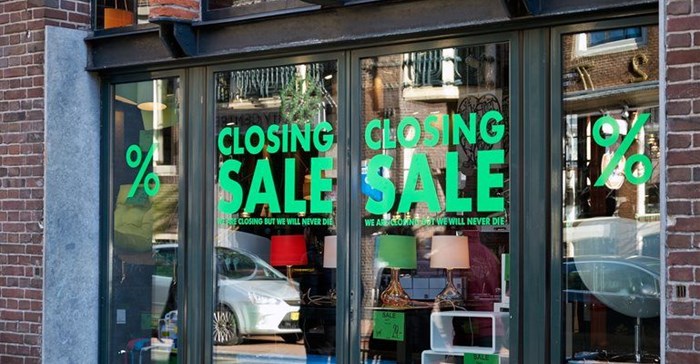With 2019 well and truly behind us, the new year brings with it several challenges for small business owners. A decrease in sales and the country's depressed economy may force several SMEs - which fail to get to the right funding - to close down.

Getty
A report published last year by KPMG notes that the sector underwent huge disruption over the past decade due to the phenomenal growth of online platforms and the impact that these have had on how consumers shop and what they expect from retailers.
Risky business
“In fact, becoming a disruptor these days has become crucial for many operations to stay in business, for both online and brick-and-mortar retailers,” believes Alex Appleby, head of treasury at Retail Capital, a company that provides alternative financing to traditional business loans.
But with disruption comes a high level of risk that many financiers still don’t understand, especially when it comes to SME businesses.
“Globally, there has been much written in the media about brands downsizing and moving online given the growth of disruption within the retail sector. It’s all about supporting the SMEs who have had the foresight to do this and tailoring a financial solution to meet their business objectives, while assisting them to face risk with the right tools,” adds Appleby.
One of the biggest stumbling blocks for many SMEs these days is access to growth capital, especially in a market where consumer spending is subdued, turnover is flat and operating costs are on the rise.
A short-term liquidity gap
Another risk SMEs face is in terms of the longevity of business many traditional funders require in order to consider loans in the first place. SMEs with a short track record in business or without a strong balance sheet are therefore often perceived high risk and face limited access to credit.
According to Appleby, this is one of the biggest challenges facing SMEs in South Africa, which presents an opportunity for alternative lenders to close this gap in such an under-serviced market.
“Financial institutions place enormous reliance on those balance sheets, and then in turn embark on lengthy turnaround times when considering loans, when many SME owners actually require quick action and access to funds,” shares Appleby.
“However, even businesses that don’t have expansion in mind, but that do well in terms of their customers, can run into financial constraints when they face a short-term liquidity gap. Typically, this ‘gap’ can range from one to two months when SMEs are faced, for example, with delays in stock shipments, late customer payments, disputes or even unforeseen external factors. Keeping on top of your cash flow requirements and plugging short-term liquidity gaps are crucial to maintaining business.
“These financial character traits are crucial to remaining innovative and adaptable in the retail environment.”
Chris Swanepoel 10 Feb 2020 Do some homework
However, SMEs must be sharply aware of assessing a suitable alternative lender as its another risk factor and Appleby believes it comes down to a company’s track record and disclosure.
“Business owners are fortunate today to have so many business and social media platforms at their disposal to assist in their due diligence for assessing responsible and reputable lenders. You must do your homework,” he strongly advises.
Questions like: How long has the business been around? Does it have a transparent fee structure? Is there a customer complaints hotline? And is the funder registered with an industry body such as The South African SME Finance Association (Sasfa)?
“The bottom line is that retail is still good business, particularly for SMEs and understanding the risk factors they face, as a financier, can result in excellent long-term partnerships,” concludes Appleby.












































